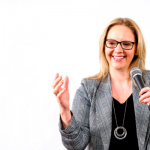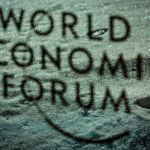The 14 traits of future ready firms

The rapid pace of change can be daunting and confusing. However, firms can create cultures that enable them to not only navigate challenges but find the opportunity to grow. Future-ready professional practices are each as unique as the people who run them; but all tend to embody the same fourteen characteristics:
1. Clear Foundation of Vision and Values
Successful future-ready firms are organized around a set of principles and a culture that are timeless, consistently lived and enduring. A clear foundation supports progress by preserving the firm’s core identity and providing a framework for navigating the complex decisions that accompany change.
2. Imaginative; looks beyond “What is”
Many firms apply creativity to problems while accepting previously held beliefs, assumptions, current conditions and received wisdom. Such practices can cause firms to accept unnecessary or inaccurate parameters and constraints. Future-ready firms disregard restrictions on their imagination.
3. Curious
To understand trends and develop scenarios, firms must collect and process a daunting amount and breadth of information, as well as consider a complex interplay of factors and events. Curiosity is the root of the drive to dig deeper, question assumptions and know more — the building blocks for creating rich and effective scenarios.
4. Embraces Continuous Change
Change can be challenging even for the most forward-thinking firms. Many mistakenly act as though change happens in fixed increments and they relax into habit patterns once periods of change are “over.” Future-ready firms embrace — and are fueled by — the mindset of continuous evolution and growth.
5. Thinks Bigger than its Size
Whether in global practice, research or innovation, firms can artificially limit their capabilities and practice based on assumptions about their scale. In order to have an outsized impact, firms must realize there are no structural limits on creative thinking.
6. Constructively paranoid and strategically optimistic
Paranoia and optimism can be good or bad, depending on degree. Future-ready firms stay alert to shifts that affect the organization and are always on the lookout for new opportunities. They believe in possibilities — even audacious ones — while remaining practical and grounded.
7. Resilient and Adaptable
Challenges and setbacks are inevitable. The ability to recover quickly and adapt to change provides firms the freedom to fail, which allows for experimentation and innovation that puts them ahead of the competition.
8. Speed as a Core Value
Firms must keep pace with accelerating rates of change in design and the marketplace. Jack Welsh said, “An organization’s ability to learn, and to translate that learning into action rapidly, is the ultimate competitive advantage.” The ability to find faster solutions, seize opportunities and establish competitive advantages before your competitors is essential for strong market position and profits.
9. Early Adopters of New Technologies
Future-ready firms seek out the advantages that technology brings in speed, efficiency, impact and creativity. In a spirit of continuous innovation, they do not merely adopt existing technologies, but customize or create their own tools.
10. Collaborative and Integrates Design and Delivery
The design and delivery process is changing fundamentally and comprehensively. Traditional stages, roles, relationships, positions of influence and value creation are all being disrupted, requiring greater collaboration with broader teams in a shorter period of time. Future-ready firms are building the processes, technologies and skills to turn the changes into advantages.
11. Incorporates Data, Measurability and Objectivity
As tools for gathering data become more powerful, so too will the demand for evidence-driven design decisions. Owners will increasingly require evidence to back up claims about building performance and the benefits of design decisions on building occupants. Successful firms will fully integrate data with the empathy and judgment of designers into higher-performing, objectively measurable projects.
12. Balances Focus on Design and Business
The new environment for design will favour firms that find a mutually reinforcing relationship between business and design. In the future as today, great work will lead to regenerative profit, which will in turn fund the facilities, technologies, tools and talent to produce more great work.
13. Pursue Smart Risk
In the future, the risk profile for firms will continue to evolve as working and legal relationships change in the design and delivery process. Firms that are thoughtful and selective in choosing to accept risk can claim significant rewards.
14. Leadership in Setting Trends and Creating Future
Future-ready firms are rarely reactive. They do not wait for a future that is defined by others to happen to them. Rather, they exercise bold leadership in creating their future.
Bob Fisher is the Principal and Editor-in-Chief at DesignIntelligence and the Design Futures Council, an interdisciplinary think tank based in Atlanta, USA. He is passionate about design, storytelling and creativity in both education and innovation.








